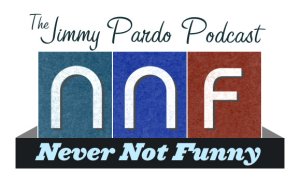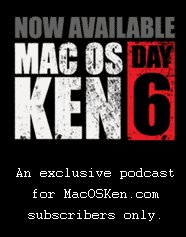This blog post is a report being submitted for Intertainment Media, makers of desktop communications and content app, KNCTR, and real-time chat translation tool, Ortsbo.
It would be so awesome if I could charge five cents for every person that visited my blog.
If I did that my viewership would probably slow to a trickle.
 Nobody wants to be told to cough up a nickel every time they click on a web page. It completely nullifies the viral effect of social sharing. Oddly, for years it was believed that micropayments (a.k.a. “Gimme a nickel for this article”) would be the way content producers were going to be paid for content. A nice idea that took off like a fart.
Nobody wants to be told to cough up a nickel every time they click on a web page. It completely nullifies the viral effect of social sharing. Oddly, for years it was believed that micropayments (a.k.a. “Gimme a nickel for this article”) would be the way content producers were going to be paid for content. A nice idea that took off like a fart.
When the micropayment idea failed, then it was believed, “Well, if they won’t pay a nickel, they won’t pay anything.” The whole “pay for content” industry threw up their hands and said, “I give up.”
The problem wasn’t the cost. The problem was the disturbance in consumption and the undervaluing of the content. People think their time and what they’re consuming is more than a nickel. When you condescend to someone and say, “Please give me five (or even less) cents to read this article” it’s lowering your value of that person visiting the site and it’s lowering the value of your content.
 The real breakthrough moment for content monetization came about when Steve Jobs said, “All songs are $.99 each.” That moment defined the finances for the entire digital content industry, not just music. Digital songs cost a buck. Now I know what to compare everything else to. If a song is a buck, then a TV show is $2 and a movie is $4 to rent, $14 to own.
The real breakthrough moment for content monetization came about when Steve Jobs said, “All songs are $.99 each.” That moment defined the finances for the entire digital content industry, not just music. Digital songs cost a buck. Now I know what to compare everything else to. If a song is a buck, then a TV show is $2 and a movie is $4 to rent, $14 to own.
Those comparisons didn’t stay within the realm of iTunes. It bled into all sorts of media and everyone was subject to Steve Jobs’ definition of the market. While a formidable competitor, we should all be thanking him, because the paid digital content market was floundering up until then. All sorts of media had conflicting valuations. For example, I remember when SprintTV released the first mobile streaming video network, which cost about $10/month. At the same time another company was offering up daily comics subscriptions for $10/each a month. Want additional comics? Then you have to pay another $10/month. That didn’t make any sense. Why should a single comic strip be the same price as multiple channels of streaming video? The reason for the failure in pricing is nobody, until Apple and Jobs, had enough of the content market in any one medium to simply announce, “This is what it’s going to cost.”
Now that people are paying for digital content, and we’re making sense of what has value. How have people successfully charged for their content, and how can you do it? Here are seven successful techniques you can use to actually charge people for consuming your content.
1. Tier your content
 There are different degrees of fans of your content. The bigger the fan, the eager they are for more content and the less price sensitive they are to get it. The band Nine Inch Nails tested this theory by successfully creating six different album packages at different prices to sell to six different markets. At the lowest end, Nine Inch Nails released a few free MP3 tracks for download. At the highest end, überfans could spend $300 and get a limited edition autographed deluxe package. That’s a lot of money, but they sold out of the limited edition package. Had they just sold an album for $15 a pop they would have left a ton of money on the table that their biggest fans were willing to pay for.
There are different degrees of fans of your content. The bigger the fan, the eager they are for more content and the less price sensitive they are to get it. The band Nine Inch Nails tested this theory by successfully creating six different album packages at different prices to sell to six different markets. At the lowest end, Nine Inch Nails released a few free MP3 tracks for download. At the highest end, überfans could spend $300 and get a limited edition autographed deluxe package. That’s a lot of money, but they sold out of the limited edition package. Had they just sold an album for $15 a pop they would have left a ton of money on the table that their biggest fans were willing to pay for.
As you build your fan base, you can start tiering the packaging and distribution of your content. Think about different ways you can do that. You can create special packaging, more content, or release certain content early for those fans that want it before anyone else.
2. Compare the better experience of paid vs. free
 To get people to pay for content, you need to have some other content, ideally for free, for them to compare it to. The purpose of the free content is to get people to start sampling, trading, and becoming a fan of your content. You use the free content to sell them on your paid content. When you offer the option of paid content it has to be a much better experience. That can take the form of “Here are all ten lessons packaged for you.” Or, “Here are the ten lessons, plus an interview with an expert who is going to walk you through each step.”
To get people to pay for content, you need to have some other content, ideally for free, for them to compare it to. The purpose of the free content is to get people to start sampling, trading, and becoming a fan of your content. You use the free content to sell them on your paid content. When you offer the option of paid content it has to be a much better experience. That can take the form of “Here are all ten lessons packaged for you.” Or, “Here are the ten lessons, plus an interview with an expert who is going to walk you through each step.”
3. Fabricate scarcity
The entire film industry is based on fabricated scarcity. Technically, they could put out a movie online for everyone to consume the second it’s done. But in order to protect the revenue structure of a film, they release the film via different venues (e.g., theater, DVD, cable, streaming, free TV) over time. We have all been trained to understand and accept this fabricated scarcity model. If we desperately want to see the movie now we shell out $11 to see it in the theater. If we’re price sensitive and not so concerned about the immediacy of seeing the content, we’ll wait six months or so when it’s released on DVD, or maybe two years when it’s available on free TV.

Dodo Bird
You can do the same with your content as well. Put content up for a period of time and announce that it will only be available until next week, and then it will be taken down. The problem with this technique is you have to stick to it. Too many people who try this technique buckle and make announcements like, “We’ve extended the time!” I see this bogus scarcity happen all the time with photos from races I’ve run. I’ll get an email in my inbox that says that I have only until Friday to purchase my photo. And then magically, they’re able to pull a few strings and keep it up for a couple more weeks. That technique works only once. You keep repeating it and the fabricated scarcity you’ve created holds no water.
I’ve got a detailed explanation of this technique in my article “How to increase the value of content without ever changing the content.”
4. Charge for the rest of the story
 Many sites have done this by showing the first paragraph and then making you pay for the rest of the article. That method has questionable effectiveness. I believe this technique works better for visual or audio media. For example, comedian Jimmy Pardo has a podcast, “Never Not Funny” where he offers up the first 20 minutes of his 90 minute show for free. If you want to hear the next 70 minutes you’ll need to pay. The reason it’s more effective is because the viewer/listener becomes invested in the programming. If you read a paragraph or two of an article, you don’t necessarily become invested in the content. Therefore, you’re not that compelled to purchase.
Many sites have done this by showing the first paragraph and then making you pay for the rest of the article. That method has questionable effectiveness. I believe this technique works better for visual or audio media. For example, comedian Jimmy Pardo has a podcast, “Never Not Funny” where he offers up the first 20 minutes of his 90 minute show for free. If you want to hear the next 70 minutes you’ll need to pay. The reason it’s more effective is because the viewer/listener becomes invested in the programming. If you read a paragraph or two of an article, you don’t necessarily become invested in the content. Therefore, you’re not that compelled to purchase.
For more on Jimmy Pardo’s business model, read and listen to my interview with the show’s producer and co-host, Matt Belknap.
5. Don’t just convert free content to paid without adding something more
I don’t think I’ve ever witnessed a successful case of a purely free content stream just converting to paid content without actually offering something additional that wasn’t available with the free content. NYTimes tried to do this multiple times in different incarnations and it wasn’t successful. I don’t know where they are with their current paid model, which requires people to subscribe after they’ve consumed a certain number of articles.
When Jimmy Pardo moved from a free to a paid version of his podcast, “Never Not Funny,” he extended the length of the show from 60 minutes to 90 minutes and also offered a video feed of the show.
 Another example is Ken Ray with his show Mac OS Ken which is a daily weekday podcast about everything connected to Apple. He was doing this show for free and wanted to charge for his show, so he created a longer form interview style “Day 6” show which he charges for. Read and listen to my interview with Ken Ray from my “Making Money from Podcasting” series.
Another example is Ken Ray with his show Mac OS Ken which is a daily weekday podcast about everything connected to Apple. He was doing this show for free and wanted to charge for his show, so he created a longer form interview style “Day 6” show which he charges for. Read and listen to my interview with Ken Ray from my “Making Money from Podcasting” series.
You can’t expect people to pay for something they used to get for free. It’s a poor value proposition and it doesn’t build trust with your audience and fans. Add something additional and then ask for money.
6. Charge for archives
People will discover your content at different times. Once they get hooked, and they like you, they’ll want to go back and check out your earlier stuff. Make them pay to see the earlier stuff. This is a version of fabricated scarcity. You can have it for free if you watch it this week, but after that you’ll have to pay for it. The advantage of that model is the people who want it for free will be forced to visit you often, thereby creating a connected brand relationship with them. The popular NPR podcast, “This American Life,” utilizes this technique.
Marc Maron charges for the archives of his podcast, WTF. When you sign up for the “Premium content” you get access to extra shows and the archive.
7. Compare to alternative costs
One of the problems with charging for content is knowing how much to charge. If you don’t know how much you should charge, chances are your audience doesn’t know how much to pay either. Help both parties understand by comparing costs. For example, say you have a five-part education series on a certain topic. Look at conferences and trade shows that are offering the same information. Or maybe a book, CD, or DVD series that’s offering that information. Then provide links and say, “You could get this series for $X or go to this conference for $Y, but for just a fraction of that cost you can buy my series online.” That way they think they’re getting great value. You presented the options and showed that this is the better deal.
Delay gratification
As we all know, it’s not easy to get people to pay for online content. Sometimes you just need to give it away for free in order to be seen. But there are other extremely valuable reasons for giving away your content for free. The people who become fans of your free content become your word-of-mouth marketing force. They are the ones that will tell others about your content and hopefully convert themselves and others to consuming both free and paid content.
People can pay for your content in other ways besides currency. They pay by telling others about you. Or they pay by giving you their email address for your newsletter so you can further market to them. Or they connect with you in a social space like Twitter or Facebook so you can maintain an easy to manage dialogue and relationship.
Recognize that people can pay in different ways, and in the end if you accept attention of word-of-mouth marketing as a form of payment (because otherwise you’d be paying for that yourself out of pocket), then you’ve still achieved your goal of getting money for your content.
Stock photos courtesy of Shutterstock. Creative Commons photo credit to kevinzim.




